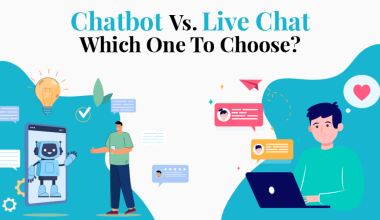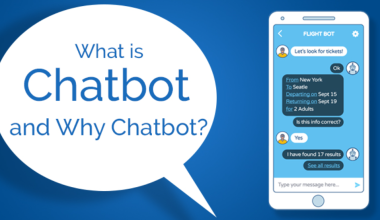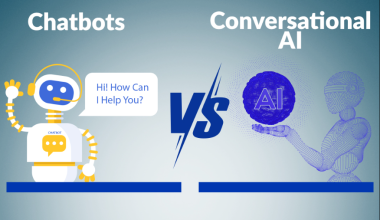Chatbots are like secret weapons that can make customers happier and help businesses do better. In this blog, you can learn how to develop your chatbot strategy to make yours the best one possible, all the steps involved in developing a successful chatbot, how to put them into action, and how to know if they are doing a good job.
Why Do You Need a Chatbot Strategy?
In today’s business world, companies are always looking for new and smart ways to make customers happy and work more efficiently. Chatbots Harnessing the true potential of chatbots isn’t just about deploying them; it is about crafting a solid strategy that aligns with your goals.

But why do we need a strategy to make a successful chatbot? Here are a few of the reasons for any business:
- Alignment with Business Goals: A chatbot strategy ensures that the technology aligns with your business objectives. It helps in leveraging chatbots as tools that support your goals, whether it’s improving customer service, enhancing operational efficiency, or driving sales.
- Enhanced Customer Understanding: A well-defined chatbot strategy allows a deeper understanding of your target audience. By analyzing customer interactions and preferences, businesses can create personas and functionalities within the chatbot that resonate with their audience, leading to a more personalized experience.
- Improved Customer Experience: A strategic approach to chatbots enables the creation of engaging and personalized interactions. This enhances customer satisfaction and loyalty by offering quick, relevant, and efficient support, ultimately leading to increased customer retention.
- Operational Efficiency and Cost Reduction: Automation of routine tasks through chatbots streamlines operations, reducing the workload on human representatives. This efficiency boost leads to cost savings by chatbots and allows human employees to focus on more complex queries or tasks, thereby increasing overall productivity.
- Competitive Advantage: Developing a chatbot strategy enables businesses to stay ahead of competitors by providing a superior customer experience. It positions the company as an innovative leader in their industry, attracting customers who value technological advancements and efficient service.
- Trackable and Measurable Results: A well-structured chatbot strategy allows for the measurement of key performance indicators (KPIs) such as customer satisfaction rates, response times, and conversion rates. This data-driven approach enables businesses to continuously refine and optimize their chatbot for better performance.
- Potential for Business Growth: Successful implementation of chatbots, as seen in the Valley Driving School example, can lead to increased lead generation, revenue growth, and expansion opportunities. This growth potential encourages businesses to explore further applications of chatbots across different areas of their operations.
There are many such benefits of Chatbots for business in the 21st century.
6 Steps to Implementing a Successful Chatbot Strategy

Crafting an effective chatbot strategy demands meticulous planning and thoughtful consideration of multiple elements. This section aims to delve into crucial steps and recommended approaches for devising a successful chatbot strategy that resonates with your business objectives and fulfils the needs of your customers.
1) Define Clear Objectives and Use Cases
Clearly outlining your objectives and identifying specific use cases is the foundational step for a successful chatbot strategy. This involves:
- Understanding Business Goals: Define what you aim to achieve with the chatbot, whether it’s improving customer service, boosting sales, or streamlining operations.
- Identifying Use Cases: Analyze customer pain points and determine where a chatbot can offer valuable assistance. Prioritize these chatbot use cases based on their potential impact on achieving your objectives.
2) Choose the Right Platform and Technology
Selecting the appropriate platform and technology involves considering:
- Functionality vs. Customization: Determine whether you need a ready-to-use platform or a custom-built solution that offers more flexibility.
- Capabilities: Assess the platform’s integration capabilities, NLP proficiency, scalability, and its ability to handle complex interactions to align with your business needs.
3) Design Conversational Flows and User Experience
Developing a seamless user experience is essential:
- Mapping Conversations: Visualize potential user queries and responses, creating decision trees or flowcharts for different conversation paths.
- Personalization: Incorporate personalized elements like user profiling and context awareness to enhance user interaction and satisfaction.
- Error Handling: Implement effective error handling mechanisms to manage unexpected user inputs gracefully.
4) Implement Continuous Learning and Improvement
Ensuring your chatbot evolves and stays effective requires:
- Monitoring and Analysis: Regularly monitor user interactions, collect feedback, and analyze performance metrics to identify areas needing improvement.
- Machine Learning Integration: Use machine learning techniques to train the chatbot on new data sets, improving its language understanding and accuracy over time.
- Knowledge Base Updates: Continuously update the chatbot’s knowledge base with new information, FAQs, and product updates to keep it relevant.
5) Test and Iterate
Thorough testing and iterative improvements are crucial:
- Functional and User Testing: Conduct comprehensive testing to identify and rectify any functional or user experience issues.
- Beta Testing and Feedback: Engage a diverse user group in beta testing to gather feedback and refine the chatbot based on user suggestions before the wider launch.
6) Deploy and Monitor
Launching the chatbot and monitoring its performance involves:
- Real-World Deployment: Deploy the refined chatbot and monitor key performance indicators (KPIs) such as user satisfaction, response time, and conversion rates.
- Feedback Analysis: Regularly analyze user feedback, conduct surveys, and make necessary adjustments to enhance the chatbot’s capabilities based on user needs and perceptions.
Following these steps methodically will help in creating and implementing an effective chatbot strategy aligned with your business objectives and customer requirements.
Now you are ready to make one for your business, build a chatbot with ChatClient AI in just 5 minutes
How to Measure the Success of Your Chatbot Strategy?
Measuring the success of a chatbot strategy involves tracking various key performance indicators (KPIs) to evaluate its effectiveness. Here are several metrics and methods to assess the success of your chatbot strategy:
- Response Time: Measure how quickly the chatbot responds to user queries. Fast response times contribute to a positive user experience.
- Escalation Rate: Monitor how often users need to be transferred to human agents. A decreasing escalation rate indicates better chatbot handling of queries. Have a decent balance between live chat and chatbots.
- Lead Generation: Track the number of leads generated through the chatbot and their conversion rates into customers. A successful strategy should contribute to increased conversions.
- Session Duration: Track how long users engage with the chatbot in a single session. Longer sessions might signify more complex or engaging interactions.
- Click-Through Rates (CTRs): Monitor how often users follow chatbot-provided links or suggested actions. Higher CTRs indicate effective calls to action.
- Net Promoter Score (NPS): Calculate the NPS by asking users how likely they are to recommend the chatbot to others. A high NPS indicates satisfied users.
- Sales or Revenue Impact: Analyze if the chatbot strategy positively impacts sales or revenue. Increased sales or revenue due to chatbot interactions signify success.
Regularly monitoring these metrics and analyzing the data obtained from user interactions will provide valuable insights into the performance and success of your chatbot strategy. It also allows for continuous improvement and optimization to meet evolving user needs and business objectives.
How to Optimize Chatbot Regularly?
Optimizing a chatbot regularly involves a continuous improvement process to enhance its performance, user experience, and effectiveness.
First, you need to review chat logs and gather user feedback to identify common issues and user preferences. In this way, you can identify bottlenecks that occur when interacting with bots. We have provided the key metrics we provided above that you can track as well.
Also, Keep information current, add new scenarios, and FAQs, and refine responses regularly.
Takeaways
This comprehensive guide to chatbot strategy intricately breaks down why having a structured plan matters in today’s business landscape. Moreover, it delves into a systematic 6-step approach to implementing an effective strategy and emphasizing the need for clear objectives.





